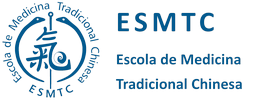Autor: Maria Constança Monteiro
Área: Acupunctura
Ano: 2018
Orientador(es): Ana Varela e Pascoal Amaral
Júri de Discussão (Presidente): José Faro (Vogais): Paula Madeira e Paulo Oliveira
RESUMO
Objetivo: Pretende-se com este estudo, avaliar a eficácia da aplicação do ponto extra de acupuntura Weiwanxiashu nos níveis de glicose capilar, em pacientes com diabetes tipo 2.
Métodos: Para a realização deste estudo foram selecionados três pacientes com diabetes tipo 2. Foram administrados três tratamentos (aplicação do ponto extra de acupuntura Weiwanxiashu) em três semanas consecutivas, um tratamento por semana. Os pacientes apresentaram-se no consultório de manhã, em jejum e antes da primeira toma do medicamento de Medicina ocidental para controlo da diabetes. Antes do primeiro tratamento foi elaborado um diagnóstico em Medicina Tradicional chinesa para identificação de síndromes de cada paciente. Antes de cada tratamento foi ainda apresentado aos pacientes um pequeno questionário para despiste de fatores que o pudessem influenciar. Por fim, foi medido o nível de glicose capilar antes e após cada tratamento, para aferir a variação de glicémia produzida pelo tratamento.
Resultados: Devido ao numero reduzido de elementos participantes na amostra, foi realizada uma análise descritiva de três casos. Constatou-se que em 55,6% dos tratamentos houve um decréscimo de glicemia, em 33,3% dos tratamentos houve um acréscimo e em 11,1% dos tratamentos os valores de variação se mantiveram constantes.
Conclusão: O estudo mostra que o tratamento de acupuntura no ponto extra Weiwanxiashu é eficaz na redução dos níveis de glicose capilar na maior parte dos tratamentos realizados.
Palavras-chave: Diabetes tipo 2; nível de glicose capilar; acupuntura; Weiwanxiashu.
ABSTRACT
Objective: This study is intended to evaluate the efficiency of the application of the extra point of acupuncture Weiwanxiashu in levels of capillary glucose, in patients with type 2 diabetes.
Methods: For the accomplishment of this study, three patients were selected with type 2 diabetes. Three treatments were administrated (application of the extra point of acupuncture Weiwanxiashu) in three consecutive weeks, one treatment per week. The patients presented themselves at the clinic in the morning, after fasting and before their first medicine intake of western medicine for the control of diabetes. Before each treatment a diagnosis was made in Chinese Traditional Medicine for the identification of syndromes of each patient. Before each treatment each patient was presented with a small questionnaire to investigate factors that could influence type 2 diabetes. Lastly, the level of capillary glucose was measured before and after each treatment, to assess the difference of capillary glucose produced by the treatment.
Results: Due to the reduced number of elements participating in the sample, a descriptive analysis of three cases was carried out. it is verifiable that in 55,6% of the treatments there was a decrease of glucose, in 33,3% of the treatments there was an increase and in 11,1% of the treatments the values maintained the same.
Conclusion: The study shows that the treatment of acupuncture at the extra point Weiwanxiashu is effective in reducing capillary glucose levels in most treatments performed.
Keywords: Diabetes type 2; level of capillary glucose; acupuncture; Weiwanxiashu


